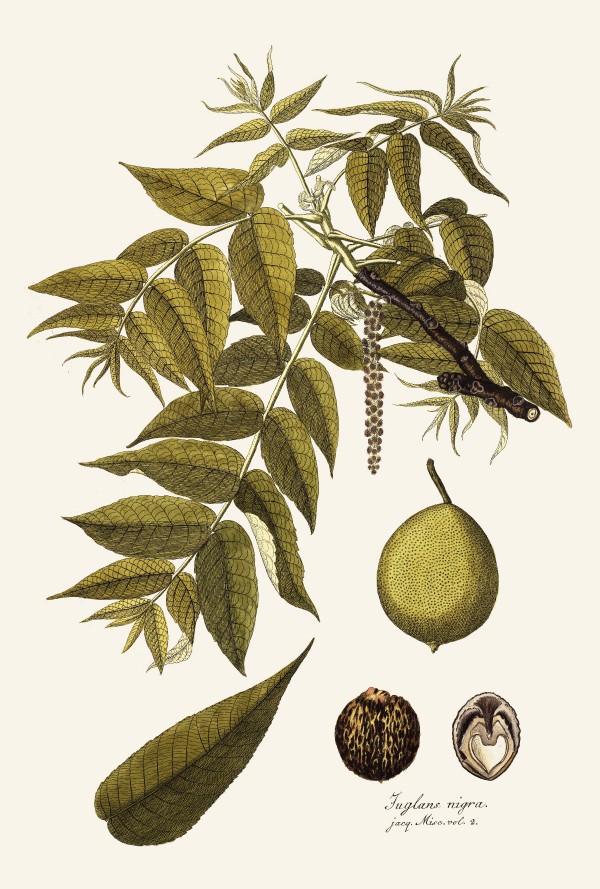Juglans nigra L. - Juglandaceae - black walnut, American walnut, Schwarze Walnuß, Schwarznuss
Deciduous tree, up to 40m tall, native to eastern North America, also cultivated there.
„Juglans nigra is frequently cultivated as an ornamental, and the nuts are prized for their strong, distinctive flavor. Native Americans used Juglans nigra medicinally as a miscellaneous disease remedy, a dermatological aid, and a psychological aid.“
http://www.efloras.org/florataxon.aspx?flora_id=1&taxon_id=233500721
„Black walnuts (Juglans nigra L.), also known as the eastern black walnut or the American walnut, are nuts characterized as a good source of proteins (approximately 24% of edible fruit) and fiber (approximately 7% of edible fruit). These nuts also have low levels of sugar (approximately 1% of edible fruit) and a healthy lipid
profile: low saturated fat content (approximately 3.5% of edible fruit), high polyunsaturated fat content (approximately 35% of edible fruit), and high monounsaturated fat content (approximately 15% of edible fruit).
More than the 50% of the total concentration of aromatic compounds probably originated from amino acid metabolism in methyl-branched esters form [methyl 3-methylbutanoate, ethyl 1-methylhexanoate, methyl (E)-3-hexenoate eg.]. The presence of these compounds was consistently and significantly higher in light colored kernels than in the medium colored or dark ones, but the associated sensory fruity or floral notes were similar across all cultivars and kernel color. Furans [2,3,5-trimethylfuran, 4-methoxy-2,5-dimethyl-3(2H)-furanone] were related with overall nutty aroma, which was typical of the light black walnut samples. On the other hand, aldehydes [hexanal, nonanal] and alcohols [2-pentanol eg], products of fatty acid oxidation, were related with rancid and acrid aromas. Hexanal was the major compound that differentiated the nuts based on the color. This aldehyde was present only in the dark black walnuts, characterized by the mentioned rancid and acrid aromas as well as musty/earthy notes. The use of domestic cultivars is justified from an aromatic point of view, not only because of the size of the kernels (bigger), but because the total amount of compounds in medium colored and dark wild samples were consistently lower than in the equivalent domestic cultivars. The presence of hexanal, associated to rancid flavors in multiple studies, might be associated with the “low quality grade” of the dark kernels of black walnut.“
[Volatile compounds in light, medium, and dark black walnut and their influence on the sensory aromatic profile., Lee, J., Vázquez‐Araújo, L., Adhikari, K., Warmund, M., Elmore, J., Journal of food science, Vol.76(2), 2011, C199-C204]

Jacquin, N.J. von, Icones plantarum rariorum, vol. 1: t. 191 (1781-1786)
http://www.plantillustrations.org/species.php?id_species=567920
Juglans nigra
© Rolf Marschner (2015),
www.botanische-spaziergaenge.at